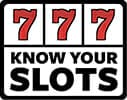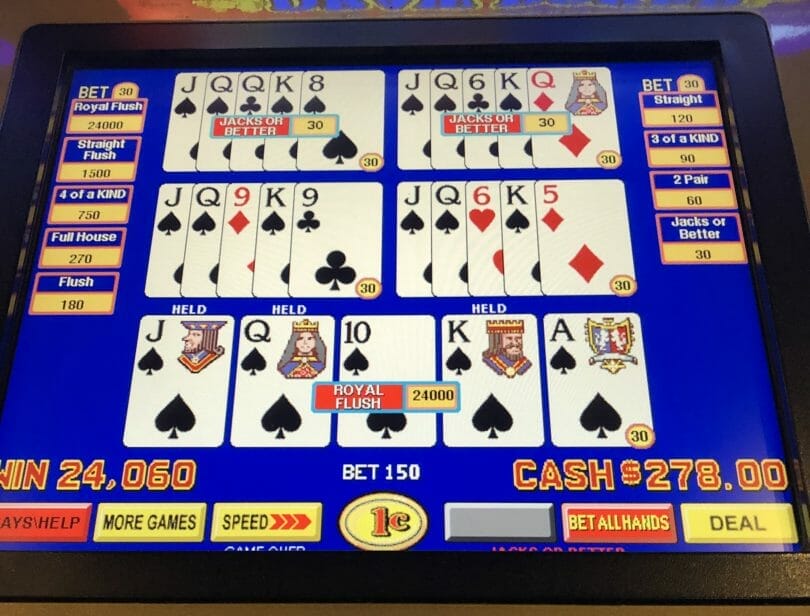While we spend a lot of time thinking about slots here at Know Your Slots, we’re also avid fans of Video Poker. Video poker has a higher payback percentage than slots do, and many of the games can be less volatile than slots. The number of permutations are also more predictable, because the game is governed by a 52-card deck, so the number of options are known and predictable.
Because the game is predictable, and what each hand pays is written on the machine, you can figure out exactly how a game will pay you back. As it turns out, casinos have a very broad array of choices of how they pay you back. And casinos that go with higher hold on video poker is likely declaring their overall intent for their gaming floor.
So in today’s video we’ll talk about understanding how to check a video poker paytable at a high level, and how to use that how to judge whether a casino is likely giving you a good shot, or is set to maximize their profits. Meanwhile, if you are a video poker player, making sure you read and understand the pay table will be your best shot of knowing where the machines are that are best for you to play in a given market. (Hint: It’s probably not a large casino operator.)
Jacks or Better: The Simplest of Video Poker Games
There are many types of video poker games, but the one that is most common and has among the longest histories is Jacks or Better, sometimes named Draw Poker. The reason why it’s so simple is the number of winning hand combinations are limited, so you don’t have as many values to review. Most pay tables, regardless of game, are evaluated based on a single coin payout for the Full House and Flush, but you have to bet at least 5 credits to get the full payout on a Royal Flush (with some machines requiring even more than 5 credit, a casino’s way to get higher coin in against the house edge over time).
The “full pay” Jacks or Better pays 9 credits for the full house and 6 credits for the flush. You’ll see that sometimes called 9/6 Jacks or Better. When played exactly to strategy you can expect an overall payback of 99.54% – meaning for every $100 bet, over time, you should see a return of $99.54. That 46 cents per $100 isn’t much money for casinos, but fortunately video poker game makers like IGT helpfully (for the casinos) offer them other settings, just like slot machines.
For each credit they take off the payout of a full house or a flush, that will take roughly 1% off the overall payout of a machine. So if a machine is set to 8/5, that is going to take an additional 2% off that payback. Given the machine was only keeping .5% before, that’s 5x the payout. Go to a machine at Caesars or MGM where it’s set to 7/5, and you’re talking an extra 3% held, or 7x the amount of a full pay machine. That can add up quickly over time.
Even at that level they will vastly outperform a slot machine at a similar denomination. But if a casino is choosing to be that stingy at the video poker level, you can anticipate that guides their decision making when they choose what hold percentage to set a slot, for instance. That’s why looking at video poker tables, even as a slot player, can be important – it can help you determine whether an operator is giving you good payback or aiming for maximium revenue.
Denomination Matters

Generally speaking, just like slot machines, casinos will give you a better pay table at higher betting levels, because you’re putting more money at risk at a time. For instance, the picture above shows a pay table I played at Ocean Casino in Atlantic City on Jacks or Better at the $1 denomination, back in December.
It’s nearly a full pay Jacks or Better, but they reduced the Straight Flush by 11 credits, so those who opt to play at the $5 level won’t handpay (they’ll get $1195 vs. $1250). That adjustment has a very small overall reduction in payout for the game, given the infrequent nature of a straight flush. This game can only be found in high limit at $1 denomination or higher.
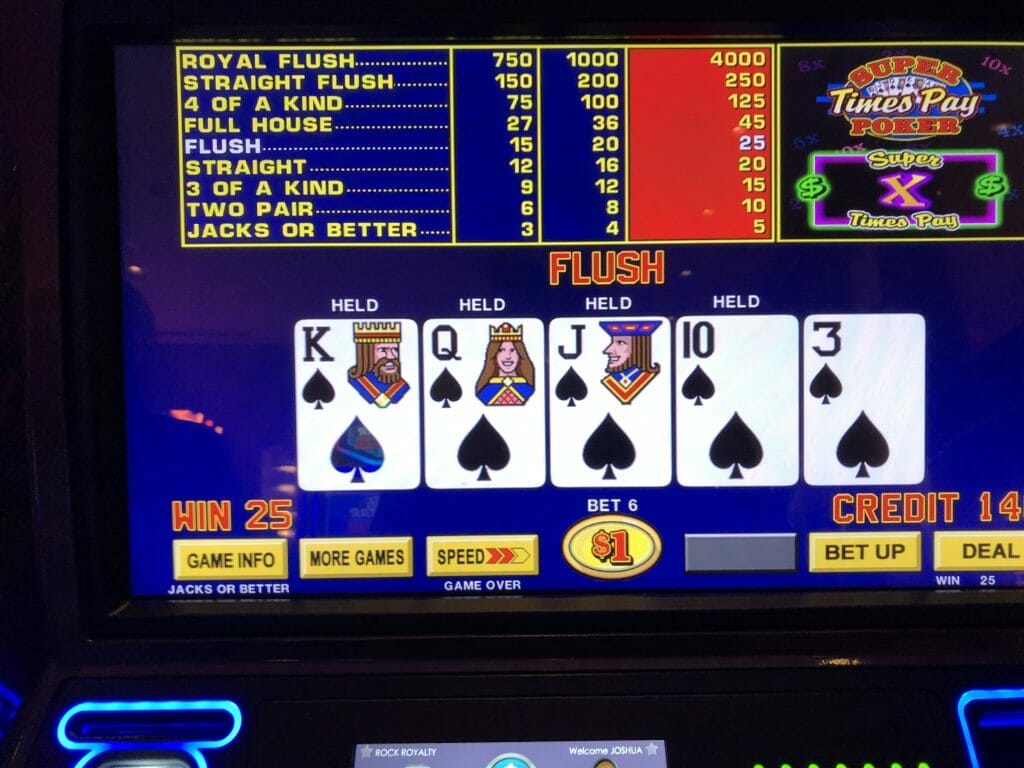
At Hard Rock, right down the boardwalk, the best I could find at dollars was 9/5, and it was a game that required a sixth coin (in this case for Super Times Pay). So I had to play $6 a hand just to have a shot at that paytable. But the multiplier could certainly amp up wins if it came at the right time.
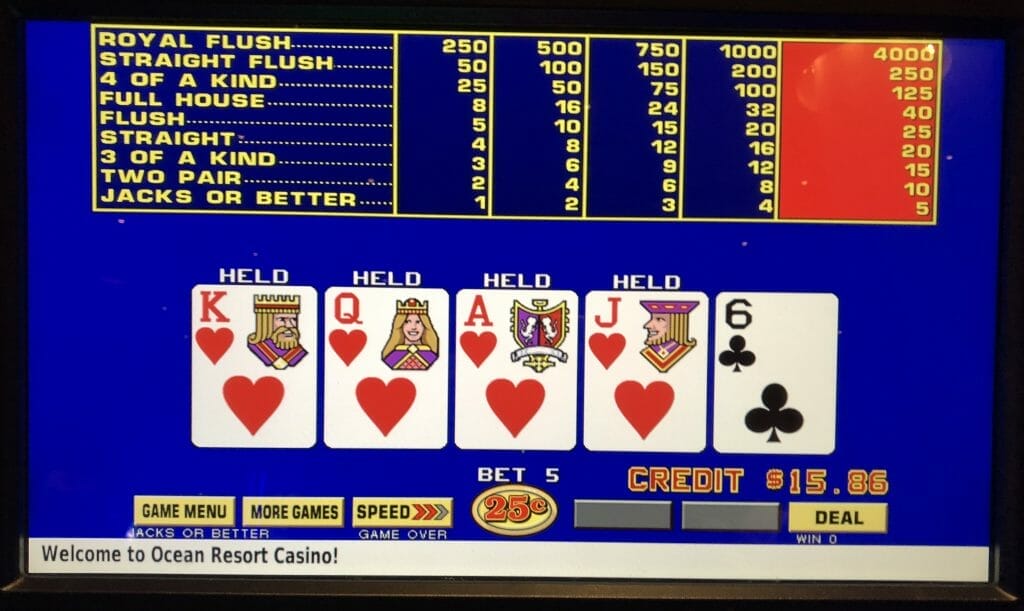
If I drop to quarters, the pay tables aren’t as generous. Back at Ocean, the paytable drops to 8/5, which is a hit of about 2% on payback vs. the high limit tables. That can be significant over time, but so can the pacing of betting when you’re betting quarters vs. dollars. In fact, in terms of absolute dollars, you’re losing about 5x faster but betting 1/4th the money, so a player at each of those machines for about the same amount of time would, on average, lose about the same amount. Short-term variance will skew this, of course, but in the long term that would be the expected outcome.
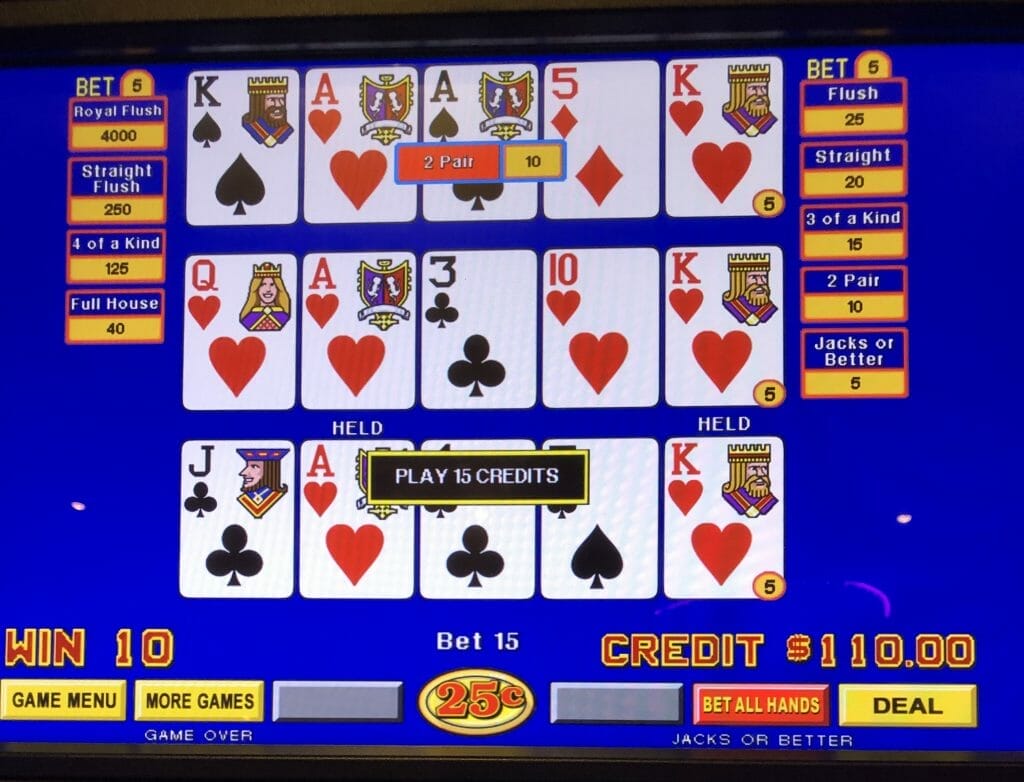
If we look at Hard Rock, it has the same 8/5 table at quarters for Jacks or Better. But stepping down from 9/5 in high limit, and the loss of that sixth quarter, makes it less drastic.
What about other casinos? Well, if you’re looking to Caesars, for instance, expect a worse payable scenario vs. some of the other casinos – I routinely see 7/5 on quarters for Jacks or Better, and on some variations it can go even lower.
Conversely, both Foxwoods and Mohegan Sun offer full pay Jacks or Better. At Foxwoods you can find it at the $1 level; at Mohegan Sun they offer it even at quarters, but you have to be willing to give up comp dollars to play it at that level.
Calculating on the Fly
The Wizard of Odds has long been a helpful site for taking a look at the math behind games, and their analysis of the various video poker games and pay tables is quite helpful in understanding what a given pay table will pay over time, and also providing strategies to maximize your play.
Their mobile-friendly site includes a handy and excellent Video Poker analyzer – if you can’t remember the various permutations and want to check it out, you can select the game you’re looking at and the machine type (as certain games with certain gimmicks can impact payouts), and it will tell you the expected payout for that game, and with that you can determine if the game pays at a level that’s good for you.
Videopoker.com has a Best Hold app that can guide you to the best hand play given a certain five cards, but its main menus let you choose which paytable you’re on, and displays the expected payback percentage of that pay table. So it can help you do a quick gut check of both how you’re playing a hand, and how that game will treat you with time.
Finally, if you want to know where good video poker paytables can be found, the venerable vpfree2.com will tell you which casinos have the most advantageous video poker tables, so if you’re going to a market with a variety of video poker machines, you can decide where you want to play and opt for a location that gives you the best chances.
But remember, no matter what the pay table, short term variance (ie: what you’re dealt) can swing you well into the positive or negative.
